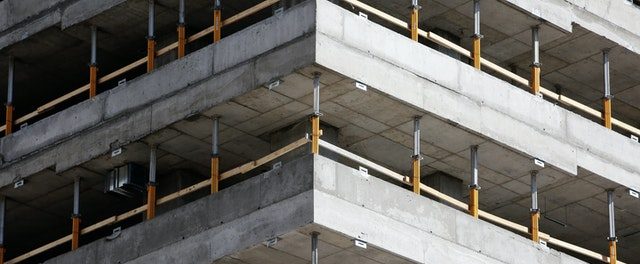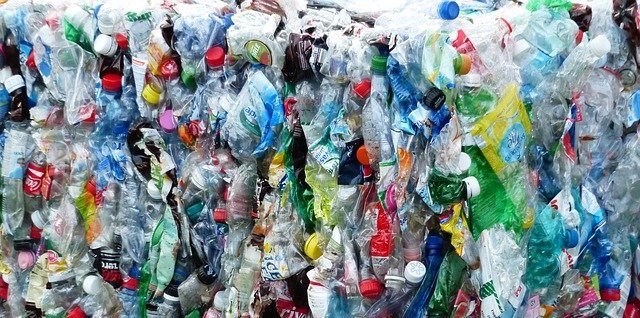When it comes to making buildings more sustainable, the focus often lies on energy saving methods and renewable energy sources. But not only hardware and building technology can contribute to greener real estate, the materials that are used to build them have a big influence as well.
In order to find out which materials are the most sustainable, we must take a look at their use-cases in the building, how quickly they can be produced, and how many resources are needed to create them.
Sustainable Building Materials
The sustainable building materials market is expected to grow from $238 billion in 2020 to $425 billion in 2027. This trend can be expected since new real estate developments and refurbishments have to comply with more and more strict sustainability guidelines, such as outlined by the EU.
The following 10 sustainable building materials have different use-cases, such as structural use, walls, insulation, flooring, and more. In addition to which material you are choosing for your real estate projects, another important factor to take into consideration is, if they can be sourced locally or have to be transported for a long distance.
1. Bamboo
Bamboo is known as one of the fastest (if not the fastest) growing plants on earth. It can grow by about 40mm per hour, which makes it a perfect candidate as a sustainable building material. Furthermore, it has similar capabilities of storing CO2 as trees do.
In comparison to steel or concrete, bamboo has a higher tensile strength and thus is stronger than these traditional materials, while weighing less. This makes it a perfect component for buildings of many different types.
Bamboo can be used for roofs, walls, floors, and other structural parts. It should be taken into consideration that it is not fireproof, which is one of the downsides compared to steel or concrete.
The plant grows in tropical and subtropical climates. This includes regions such as Middle- and Southamerica, Africa and Asia.

2. Straw
The characteristics of straw and straw bales make them suitable as a good sustainable building material. It is easy to grow in different types of climate as it is basically just dried grass and does not require further processing after being harvested.
In buildings, straw is mostly used for insulation in walls and floors because of its capability to retain heat and keep a stable temperature. Because of the organic form, straw can be 100% recycled, thus increasing its benefit for green real estate. There is a growing number of houses implementing this material which has proven that it can be commercially successful.
3. Cork
Another material that is fully organic and provides great use-cases for buildings, is cork. It is gained from the cork oak tree and can be removed from the living plant without having to cut it down. This makes it even more sustainable than other comparable materials.
Cork is very resistant to pressure and cannot absorb water or rot. Furthermore, it is very light and also fire resistant. Because of its great ability to absorb shock and noise, Cork is mostly used for flooring or also sometimes insulation.
One issue with this material is the place where it grows. Cork can only be found in areas around the mediterranean sea, meaning southern Europe or northern Africa. Because of this, shipping it around the world makes it a little less sustainable.
4. Wool
Wool, in particular sheep’s wool, can not only be used for clothing but also to improve our buildings. Similar to jackets, it has the ability to retain heat and thus can help to achieve impressive levels of energy saving.
In comparison to straw, sheep’s wool does not degrade as quickly but on the other hand, needs treatment to be protected against insects or moths. New research has found ways to do this without having to use chemicals.
Sheep can be found all over the world, but especially in colder climates. This makes wool a product that can easily be sourced, no matter where a building project is located.

5. Recycled Steel
When we take a look at construction projects throughout the world, steel is one of the materials that is used most often. It is very strong, can be prefabricated in various different forms, and makes the construction process very fast. On the other hand, it requires a lot of energy to produce.
By reusing steel that has already been installed, a significant amount of resources and energy can be retained while also benefiting from the strength and durability of the metal.
This sustainable building material can be sourced from everywhere and can sometimes even be used in its current state. Often, the recycled steel has to be manufactured to a different shape.
6. Timbercrete
Timbercrete is not a single sustainable building material, but rather (as the name suggests) a mix of two. A combination of timber and concrete can be formed into bricks that are then used for constructing houses.
Regular concrete is mixed with sawdust and then pressed into a mould. This process requires less energy in comparison to normal concrete. The final product has the benefit of being lighter than regular bricks and having better insulation capabilities. This makes transportation easier and cheaper.
7. Precast Concrete Slabs
Not only the material itself can be sustainable, but also by the way it is transported or sourced. An example of this are precast concrete slabs.
In order to produce them, concrete is poured into a form and then hardened. Normally, this will be done directly at the construction site. At these special manufacturing places, the concrete can dry controlled and thus achieve a higher quality than the regular one. In some cases, holes are created inside these slabs to reduce weight, while still providing great strength.
Thanks to this advantage, less concrete has to be demolished because of flaws and the amount of energy used to produce it can be lowered.

8. Earth
For thousands of years, earth has been used as a material to construct houses or infrastructure. In earlier times, it was used out of necessity but nowadays it can be one of the most sustainable building materials.
Earth has great insulation characteristics and can keep a moderate climate inside a house. For modern buildings, the earth is pressed into a form and can then be installed as part of a wall or flooring.
As this sustainable building material is available in most places around the globe, there are no issues when it comes to sourcing it.
9. Recycled Wood
Harvesting new wood is a process that impacts the environment quite drastically, especially when it comes to CO2 emissions. By reusing wood from existing construction projects, this downside can be eliminated.
This material can easily be removed from old buildings and used in its current shape. It is widely available and can be used for flooring, beams or walls.
10. Recycled Plastic
When looking around in our house, many of the products we use on a day-to-day basis are made out of plastic. Especially single-use plastic items such as cups or bags are a great risk for our environment.
By shredding the plastic and pressing it into forms, it can find a use for insulating walls and floors. This sustainable building material can reduce waste and provide an alternative for housing.

Conclusion
In order to achieve buildings that are good for the environment, a mix of smart building technologies and sustainable building materials is necessary. This includes natural elements such as bamboo, earth or wool, and recycled ones such as wood, plastic or steel.
As the market for sustainable building materials grows quicker than ever, new companies and new materials are coming to the market, accelerating the rise of green buildings.
If you want to learn more about green buildings, smart cities and PropTech, feel free to take a look at our other blog articles.

